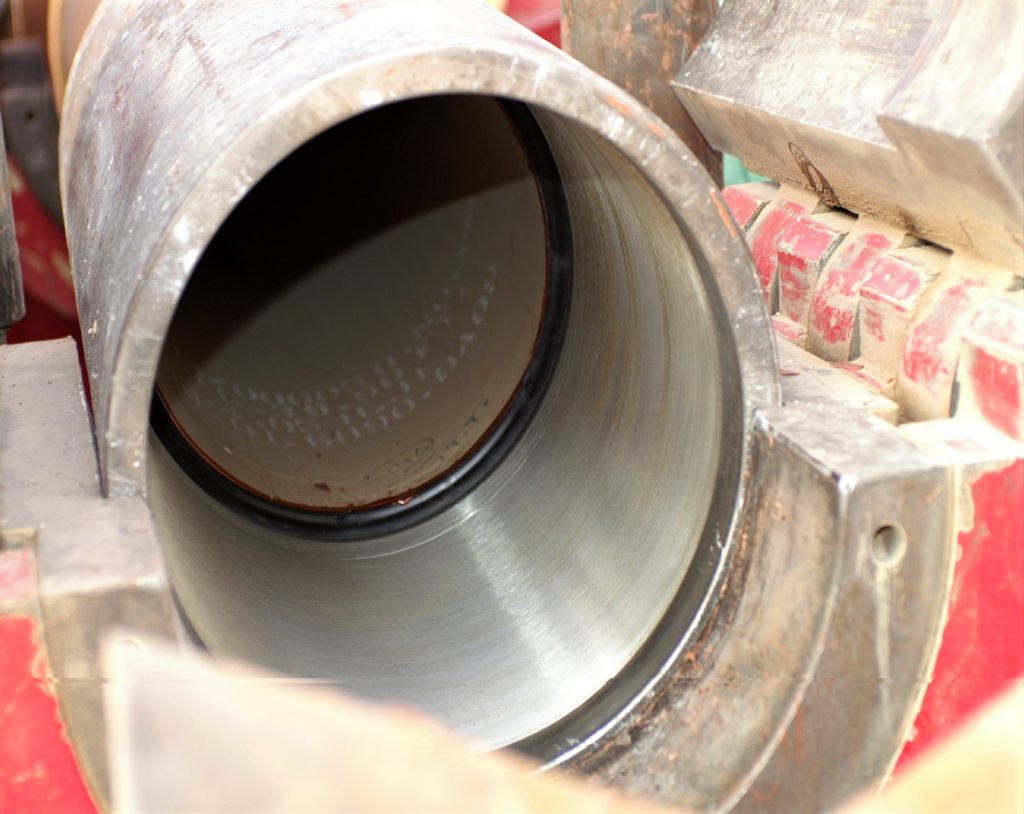 HOW IT WORKS
HOW IT WORKS
- Mechanical connector - Positive Seal Coupling (PSC) ID is machined smaller than the OD of the line pipe is it designed to join.
- The Mechanical connector - PSC ID is machined with inward directed serrations, or “slips”, and annular grooves to grip the pipe
- The pipe end hydraulically pressed into the coupling for a controlled mechanical interference fit. The interference fit generates a very high interfacial bearing pressure between the coupling and the pipe, which is directly proportional to the pipe’s yield strength and wall thickness. In turn, the interfacial bearing pressure creates the coupling’s strong gripping force on the outer pipe surface.
- The Positive Seal Coupling - Mechanical Connector itself functions within its elastic stress range under all interference fit and code allowable load conditions.
- A lubricant/sealant epoxy is applied to the PSC ID and the pipe end OD prior to make-up. The lubricant/sealant is trapped between the Positive Seal Coupling - Mechanical Connector serrations and seals the coupling-pipe interface. The lubricant/sealant also seals at the pipe ends and forms a bead at the pipe end seam to give a continuous coating on internally coated or lined pipe.
- A shaped Seal Ring Gasket (SRG) is also installed in the center of the coupling to prevent direct contact of the pipe ends, and it also forms a redundant seal when the SRG is energized between the pipe ends upon make-up completion.
